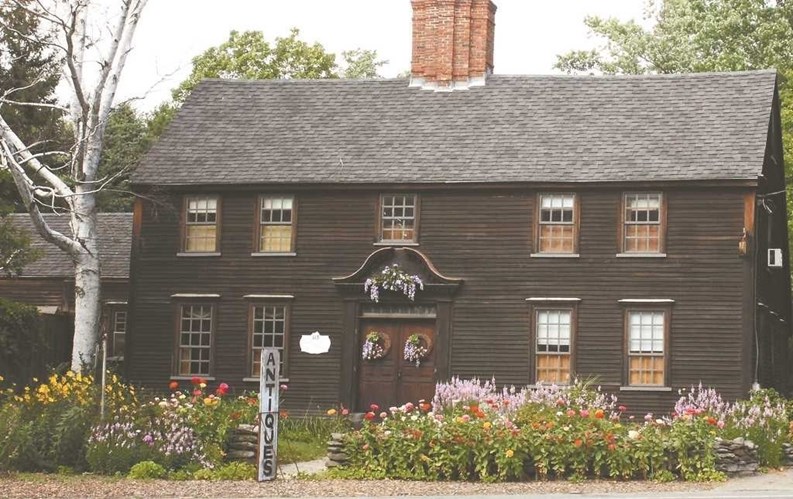In some ways, Hamilton, Massachusetts, located in the area known as the “North Shore” (north of Boston), is the quintessential New England town. There are fields and woods and historic homes and easy access to the ocean. On the other hand, some of its very postcard qualities are what make it most distinct.
A Little Bit Country,
A Little Bit Rock and Roll
Many New England towns are named after places in England or after their founders or other townspeople of significance to them. Not so Hamilton. Formerly known as “the Hamlet,” this town’s leadership named their home after Alexander Hamilton simply because of his general significance in American history—not because he had anything specifically to do with the town. Also uniquely, in spite of the American Industrial Revolution’s having begun more or less “down the road” from Hamilton, the town itself has never had a manufacturing-industrial past, nor does it have such a present. It continues not to be zoned for manufacturing industry, so most residents either commute to nearby cities like Salem or Boston for work, or they work in the shops, eateries and small businesses which keep the town charming and economically viable. The town is rural and largely residential.
Hamiltonians do not mind describing their town as “primarily a suburban bedroom community.” They are proud of their notable equestrian estates. Most town sources like to point out that, while traversing the secondary roads in town, “you would likely share the road with horseback riders.” The Myopia Hunt Club (named cheerfully for its founders: four brothers with poor eyesight) is a private “fox hunting” (real foxes are not hunted) and polo club, which opens its Sunday afternoon polo matches to the public for a small fee. It also features a golf course with two of the United States’ top 100 signature holes, according to Golf Magazine.
The town’s citizens are also deservedly proud of their school system, which they share with the neighboring town of Wenham. All but one of the excellent district schools are located right in town. Hamilton-Wenham Regional High School ranks consistently in the top 10% for overall education in the state. There are approximately 2,030 students between the five schools in the district, and the schools insist on being discrimination-free. The town also boasts the private Pingree School and, for distinctive religious higher education, Gordon-Conwell Theological Seminary.
Happily, for a bedroom community where commuting is part of the rhythm of daily life, Hamilton is highly accessible. Route 128 is the closest highway, while Route 1A passes directly through the center of town and Route 22 makes an appearance as well. There is an MBTA station right in town on the Newbury branch of the Newbury/Rockport line from North Station in Boston. Naturally, being that close to Boston, Logan International Airport is also easy to reach.
People are not all that isolated, however, in spite of the number whose work lives take place in other cities. The founders of the Myopia Hunt Club donated the site for what is now the General George S. Patton Memorial Park, which is still a recreational gathering space for all the townspeople. Community House was originally built in memory of eight Hamilton-Wenham men who died in the First World War; it now offers classes and other activities to the community. In the summers, for those of a religious bent or perhaps with an interest in sociology and psychology, Asbury Grove, a relic of the mid-nineteenth century Methodist revival meetings, still holds “camp meetings” in one little-known pocket of town. These meetings have been held continuously there for over 150 years. Chebacco Lake is a popular spot for boating and fishing, and museums and nature reserves abound in other nearby communities.
Settling In
According to Christine Larcom, the administrative assistant to the Hamilton town assessor, only 43 parcels in town are coded as condos, while single-family homes make up 2,338. The populace here is settled, comfortable and community-oriented.
Although most of the centuries-old houses in Hamilton are still single-family residences, a few of them have been divided up for condos, while Carriage House Junction is the new, and primary, condominium development in Hamilton, with 23 units. The development was zoned for condominiums on the basis that the units be “affordable.” Mirella McDonough, realtor/owner of Exit Seacoast Realty in nearby Ipswich, says that the average price of single-family homes in town is $515,500 and the median price $369,000. Meanwhile, condo prices range from $160,000 to $550,000. She expects to see “an uptick in home prices” by next year. Only one condo unit sold in 2010, for $469,000.
Asbury Grove provides another, and unique, housing option in Hamilton. Like Carriage House Junction, its housing is more affordable than some of the other homes in town, largely because its cottages are on leased land, McDonough says. As a continuing-active religious community and a location listed in the National Historic Register, its “flavor” is quite distinct from the rest of Hamilton, but it does contain 63 privately-owned homes and 80 seasonal cottages, any of which are occasionally up for sale or rent. Asbury Grove also offers “an Olympic sized swimming pool, tennis and basketball courts, a ball field, picnic area, horseshoe pits and a tot playground,” according to their website.
In all, Hamilton proves to be a pleasant place to live and retreat from the daily grind. It represents much of what is appealing about New England, with just enough charming quirks to keep it interesting and a worthy investment of time and resources.
Jennifer Grosser is a freelance writer and a frequent contributor to New England Condominium.







Leave a Comment